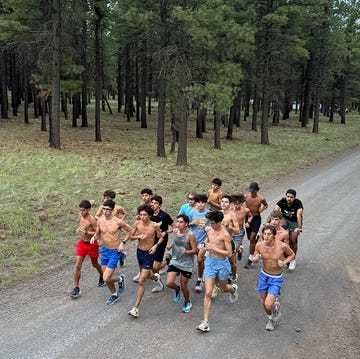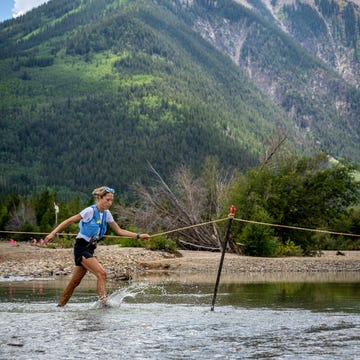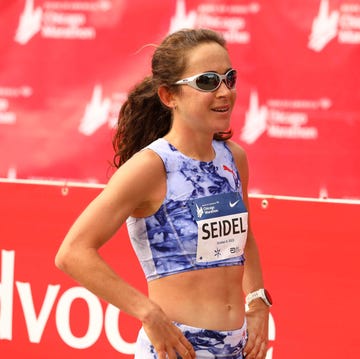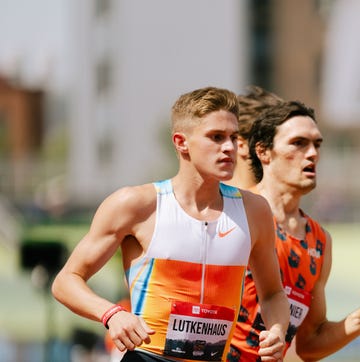We are in the midst of an Olympic summer right now, and that has many thinking back on Olympics past. After all, the idea of tradition is built into nearly every facet of the Games.
Why do they carry the torch? Tradition. Why the five rings? Tradition. Why is the marathon exactly 26 miles and 385 yards? Tradition.
However, for the last decade or so, that last “tradition,” the 26 mile and 385 yards marathon distance, has been the subject of scrutiny. To understand why, one needs to know where that particular measurement originated, why some think they measured wrong, and how a certain British monarch helped straighten things out.
While our idea of a “marathon” goes all the way back to the legend of Pheidippides during the Battle of Marathon in 490 B.C.E., as a recent article in The Guardian notes, our modern measurement for the marathon has its origins in the 1908 London Olympics.
In the annals of Olympic history, the marathon is immortalized in the story of its dramatic finish. As The Guardian notes:
“One hundred and 16 years ago on Wednesday, the 22-year-old Italian Dorando Pietri was leading the 1908 London Olympic marathon only to collapse yards from the finish. Five times he fell. Five times he was helped up. To the roars of nearly 100,000 people at the White City Stadium, he staggered over the line in first place.”
Pietri was ultimately disqualified for outside assistance, but interestingly enough, in previous iterations of the Olympics, he may have made it to the finish line before he ever collapsed.
That’s because in previous years, the marathon’s distance “had been loosely around 25 miles,” with the finish line likely before Pietri’s collapse.
For 1908, though, and every Olympics going forward, the distance was the aforementioned 26 miles and 385 yards, due in part to the starting point for this marathon being selected as the historic Windsor Castle.
Fast forward 100 years from that fateful marathon, and the famed Windsor Castle starting point was now the cause of controversy in the running world. According to The Guardian:
“The former Daily Telegraph editor John Bryant revealed that the 1908 course had been remeasured using ‘maps, contemporary photographs and 21st century methods’ and was found to be 174 yards (159 metres) short. In other words, the famous distance was based on a mistake.”
That remeasuring was undertaken by John Disley, co-founder of the London Marathon, who determined that "the discrepancy may have been caused by the starting position at Windsor Castle being switched at the last minute from the Long Walk to the Eastern Terrace.” It was a revelation that left people in the racing world shook.
One such race enthusiast was Joe Neanor. "As a marathon runner I was devastated,” he told The Guardian, “I thought: ‘We are running this distance and it’s a lie.’”
But was it all a lie? Neanor wasn’t satisfied, so he set about on a multi-year mission to either confirm or debunk this remeasuring. The first hurdle was determining where exactly the race began, “with the official report vaguely stating ‘the race starts from Windsor Castle, near the East Terrace, 700 yards from Queen Victoria’s statue’.”
But eventually, there was a breakthrough: an image from the Illustrated London News, which captured the Crown Prince of Sweden marking the starting line, with the castle and the runners in frame.
“It’s the only photograph that brings those two elements together in a single image,” Neanor said. “And it only exists because of the two children at the bottom of it, Princess Mary and the future George VI, the grandfather of our King Charles. The photographer clearly wanted something beyond a bunch of runners so [they] took an image with the royal children.”
Neanor, now knowing the starting point, enlisted the help of professional marathon measurer Hugh Jones. But there was someone else whose assistance the duo needed, and getting in touch with him wasn’t as simple as a telephone call. Since the place they needed to measure was at Windsor Castle, which is property of the crown, they needed the permission of the very man whose grandparents appeared in that photo, King Charles.
It was a long shot, but a long shot that paid off. A spokesperson for Windsor Castle informed them that “Given the private area that we were working in, The King gave His personal approval for the exercise to take place and expressed His interest in the outcome.”
Finally, this year, Neanor, Jones, and Col Duncan Dewar, superintendent of the castle, assembled to once and for all resolve the controversy around the marathon’s measurement. “Jones started by measuring Queen Victoria’s statue through to the Wicket Gate, making chalk marks to define each section of the course, before noting the distance,” The Guardian writes, “The first part: 285.5 yards. The remaining section of the East Terrace wall: another 86.5 yards.”
This meant that, ultimately, the race had been accurately measured from the start. The 1908 distance was indeed true. Neanor was vindicated.
And going forward, Windsor Castle might very well mark the spot to commemorate the historic race: “We are examining the possibility of marking the position of the start for future reference,” a spokesperson said. “But nothing has been agreed at this time.”
Whatever the case, through dogged detective work, and some royal intervention, we finally have an answer to a century-old mystery.
Michale Natale is a News Editor for the Hearst Enthusiast Group. As a writer and researcher, he has produced written and audio-visual content for more than fifteen years, spanning historical periods from the dawn of early man to the Golden Age of Hollywood. His stories for the Enthusiast Group have involved coordinating with organizations like the National Parks Service and the Secret Service, and travelling to notable historical sites and archaeological digs, from excavations of America’ earliest colonies to the former homes of Edgar Allan Poe.















